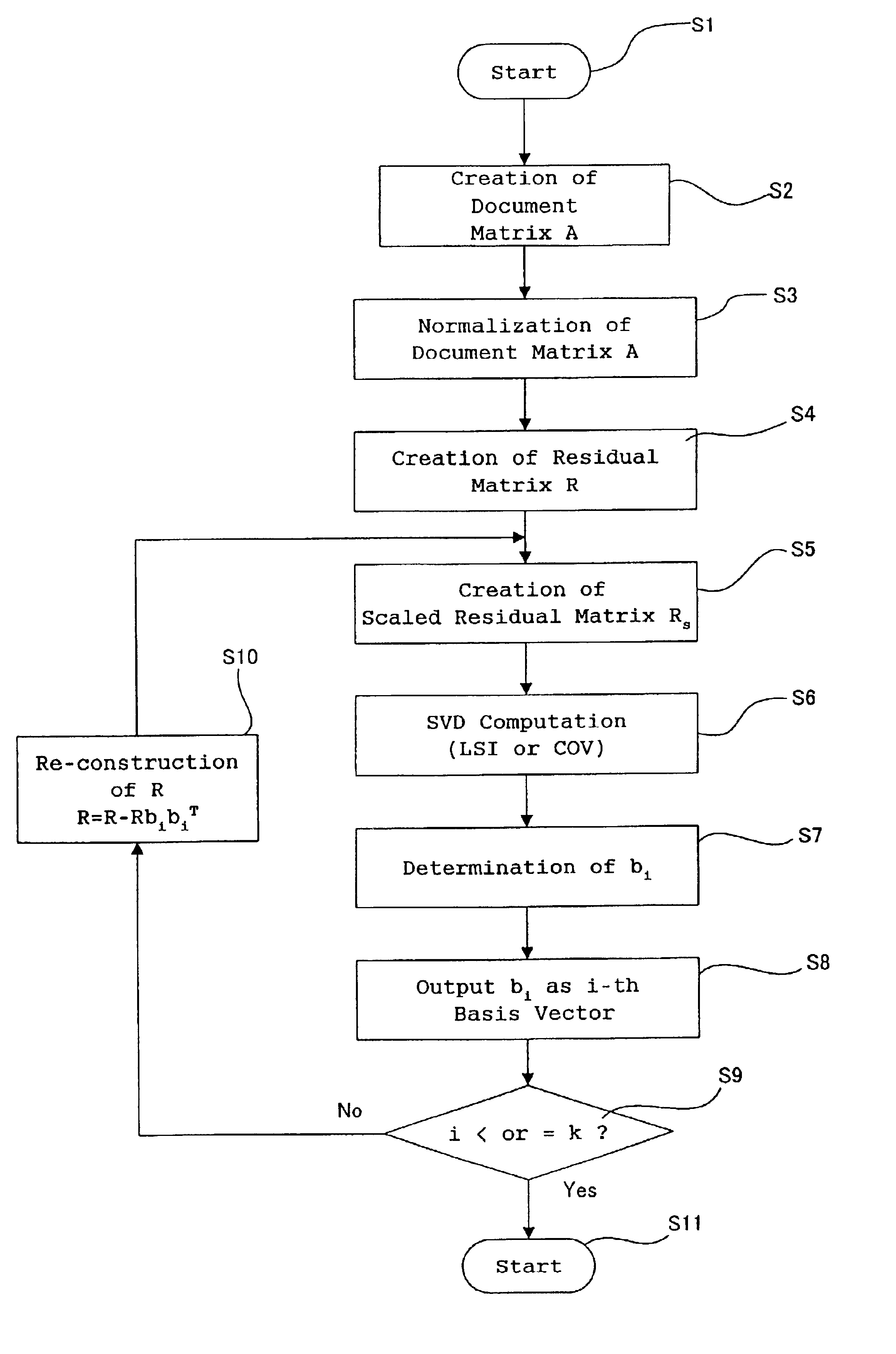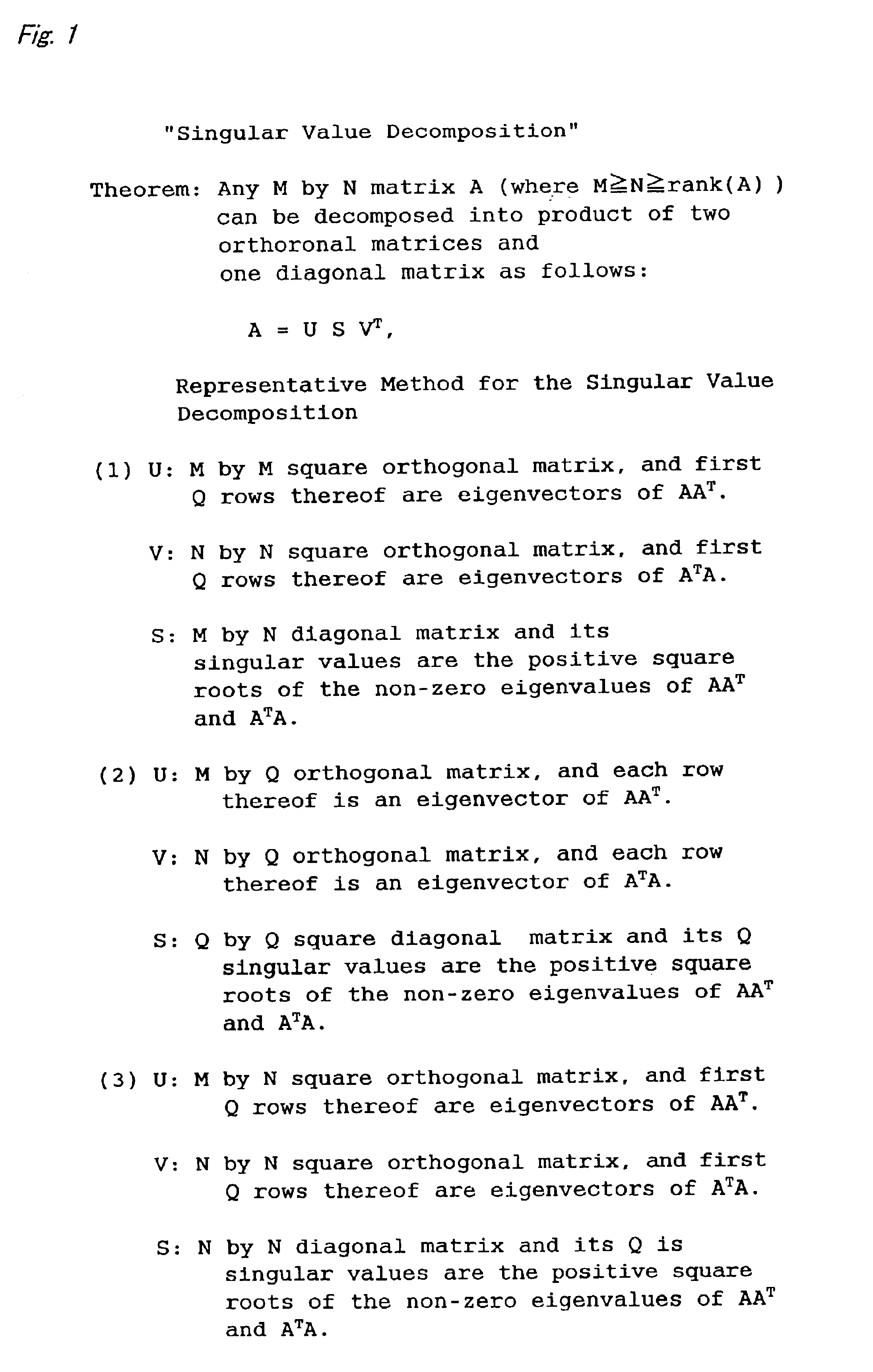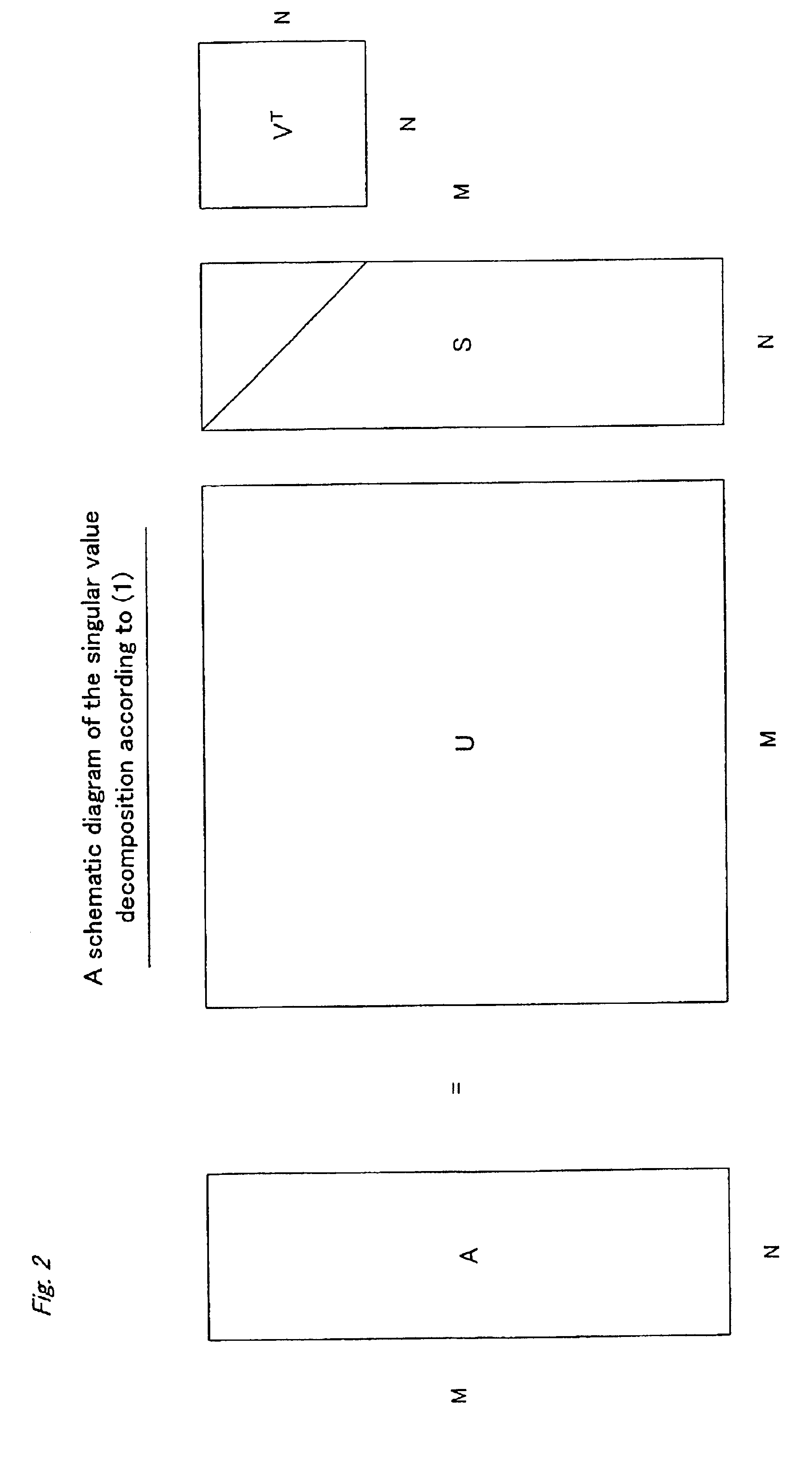Retrieving, detecting and identifying major and outlier clusters in a very large database
a database and database technology, applied in the field of large matrices, can solve the problems of discarded minor outlier clusters, inability to retrieve, detect and identify inconvenience in retrieval, detection and identification of documents in large database, so as to save computer resources such as performance, the effect of accurate retrieval
- Summary
- Abstract
- Description
- Claims
- Application Information
AI Technical Summary
Benefits of technology
Problems solved by technology
Method used
Image
Examples
example 1
[0118]The above constructed sample database was subjected to the present method to reduce the dimension thereof according to the algorithm 1. The dimension of the sample document matrix was reduced to 40 keyword dimensions to 6 keyword dimensions using the scaled residual matrix according to the present invention. The measure of the relevancy, that is, “similarity average” for the k-th cluster Ωk was calculated to eliminate random input of the keywords according to the following formula: similarity average (SA)k=1(Ωk2)∑i>j,i,j∈Ωk dihat·djhat,
[0119]Table II shows the result of the present method for retrieving and detecting according to the algorithm 1.
[0120]
TABLE IIResults of the present inventionCluster nameSADocument No.1Java + JSP + applet cluster0.911102Clinton + Al Gore + Hillary cluster0.898103Bluetooth cluster (outlier)0.88154Clinton + Al Gore cluster0.834104Java + JSP cluster0.834106Java cluster0.818257Clinton cluster0.810258Matrix cluster (outlier)0.76359Soccer cl...
example 2
[0122]The above constructed sample database was further subjected to the present method to reduce the dimension thereof according to the algorithm 2 while keeping other conditions. The computed results are listed in Table III and are also represented as the similarity average (SA).
[0123]
TABLE IIIResults of the present inventionCluster nameSADocument No.1Java + JSP + applet cluster1.084102Clinton + Al Gore + Hillary cluster1.019103Java cluster0.915254Java + JSP cluster0.891105Clinton cluster0.860256DNA cluster (outlier)0.84957Matrix cluster0.84058Clinton + Al Gore cluster0.836109Soccer cluster (outlier)0.793510Bluetooth cluster (outlier)0.776511Java + applet cluster0.661512Clinton + Hillary cluster0.6245
[0124]As shown in Table III, all of the outlier clusters are retrieved and detected with a higher relevancy score and hence the method according to the present invention is quite effective in detecting, retrieving and identifying the outlier clusters.
PUM
 Login to View More
Login to View More Abstract
Description
Claims
Application Information
 Login to View More
Login to View More - R&D
- Intellectual Property
- Life Sciences
- Materials
- Tech Scout
- Unparalleled Data Quality
- Higher Quality Content
- 60% Fewer Hallucinations
Browse by: Latest US Patents, China's latest patents, Technical Efficacy Thesaurus, Application Domain, Technology Topic, Popular Technical Reports.
© 2025 PatSnap. All rights reserved.Legal|Privacy policy|Modern Slavery Act Transparency Statement|Sitemap|About US| Contact US: help@patsnap.com



